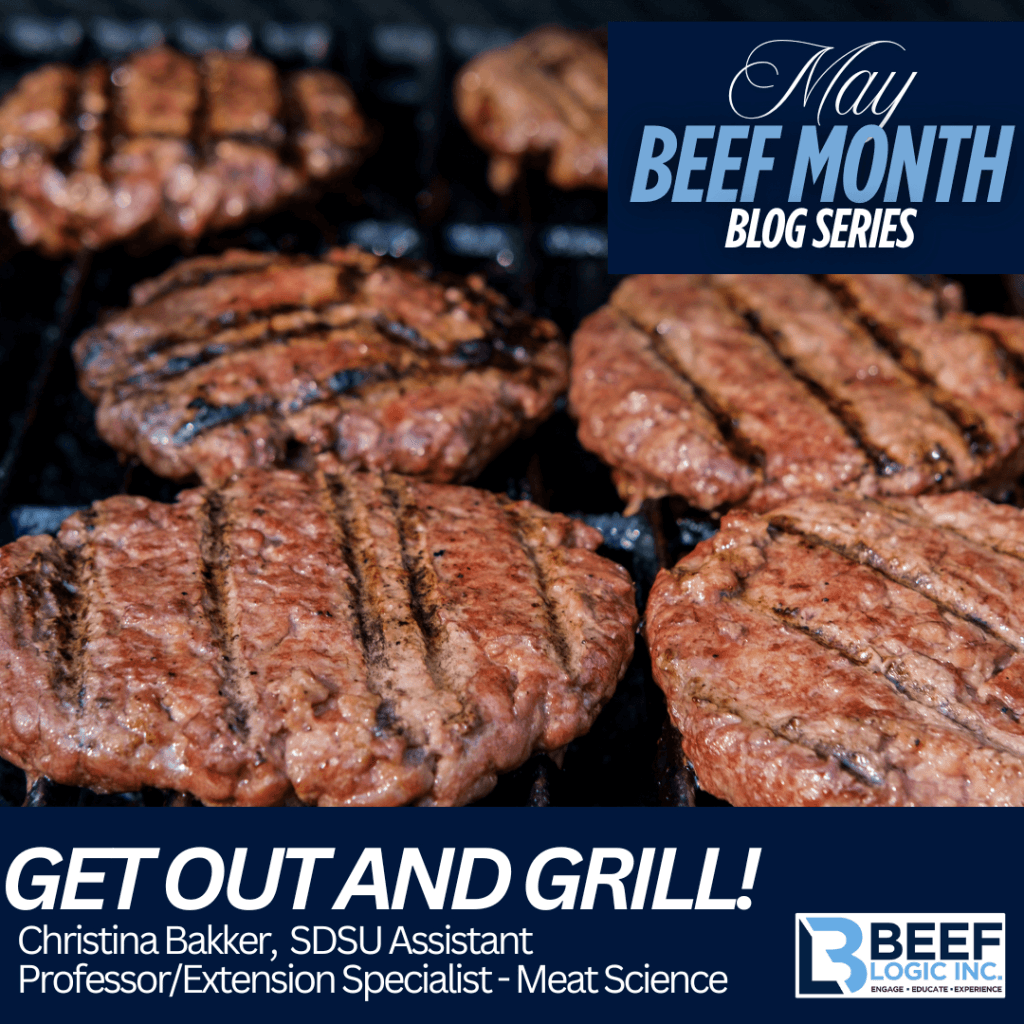Get Out & Grill - Christina Bakker
It’s Steak Month, Get Out and Grill!
It’s a perfect summer’s evening. The sun is still up, a light breeze through the trees, and you’re poised at the grill listening to the sizzle of steak over the flames. The last thing you want is to sit down at the table with those steaks and be disappointed in how they turned out. In this post, I’ll discuss how you can maximize your chances of a good eating experience from grocery store to your plate.
Selecting the right steak
When it comes to the things we eat, many of us are creatures of habit; always reaching for the same product time and time again. However, when it comes to steak, branching out may not be a bad idea sometimes. With the high cost of groceries, maybe it is harder to afford to treat the family to the high dollar classics like strip steaks or ribeyes. How can you still get your beef fix on a budget? Over the past 20-30 years, a lot of research has been done to identify non-traditional cuts of beef that will provide satisfactory eating experiences without the price tag of middle meats. Here are some suggestions to try the next time steak is on the menu.
- Chuck eye steak: This steak is commonly found in the grocery store, and for good reason. It contains the exact same muscles as a ribeye steak because it is taken from the chuck side of the ribeye primal. It may also go by other names such as the Delmonico, Chuck Filet, or Poor Man’s Ribeye.
- Denver Steak: This steak also comes from the chuck and is the 5th most tender steak from the carcass. Known for its high amount of marbling and robust flavor, the Denver steak rarely disappoints. It may be a bit harder to find in chain grocery stores, but check with your local butcher to see if they carry it.
- Coulotte: This larger cut of meat comes from the sirloin and will provide an eating experience similar to a tri-tip. It can be smoked or grilled whole then sliced or it can be portioned into steaks prior to cooking.
- Flat Iron: The flat iron is probably the most commonly identified steak on this list, but it is still a crowd pleaser. The flat iron can also be referred to as the top blade steak and is commonly found in most grocery stores. The flat iron is the 2nd most tender cut from the beef carcass and has a more intense flavor.
Preparing to grill
Now that you’ve picked your steak, you’re ready to start preparing it. Everyone has their own preferences for imparting flavor into their steak. Some prefer a dry rub while others choose to marinate. If you choose to use a marinade that has tropical flavors such as pineapple, be aware that the enzymes in those marinades break down proteins and leaving the meat in the marinade for too long can cause a mushy or grainy texture on the meat. If you’re stuck on how to season your steak, a basic rub can be made by combining ¼ cup of salt, 1tsp of garlic powder, 1 tsp of onion powder, and 1 Tbsp of black pepper. Remember, flavors should work with the meat, not overpower it.
Grilling tips
The steaks are on the grill, now what? Grilling is sometimes revered as a time honored practice that can only be mastered by those who take it seriously. I’m here to tell you, it’s not that deep, anyone can learn to grill. Here are some tips to make stepping up to the grill less daunting. First, start with a clean grill grate. Avoid excessively charred flavors by removing any leftover debris from the last grilling session. Be sure to use a high quality grill brush to avoid metal shavings contaminating your steak. Next, know when to flip the steaks. Research has shown that steaks that are flipped more often can turn out to be juicier than steaks only flipped once. But, if that seems like too much work, flipping once is fine.
Achieving the perfect cook
Some grill masters claim they can cook a perfect steak every time, just by poking it or looking at it. For the rest of us mortals, the tried and true method to achieving the perfect cook is by using a meat thermometer. To get the proper temperature of a steak, pick it up with a set of tongs and insert the thermometer from the side into the thickest portion of the steak. For a medium rare steak, the target end temperature is 145°F. When a piece of meat is removed from the heat source, it will continue to cook for a few minutes so you can pull the steak from the grill at around 138-140°F and it will rise to 145°F.
Dig in
While it may be tempting to start eating as soon as the steaks come off the grill, best practices tell us to let the meat rest for at least 3 minutes before cutting into them. This will prevent all the juice from running out onto the plate the second you cut your first bite and keep your steak juicier. Remember beef is a good source of Zinc, Iron, and Protein, meaning its not only delicious, but also nutritious. So, this month I challenge you to get out and grill. You’ll be glad you did.

